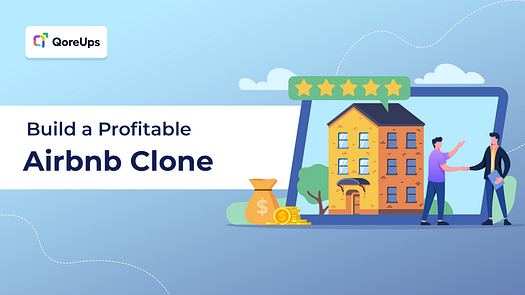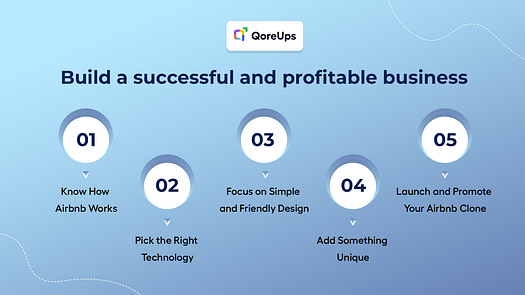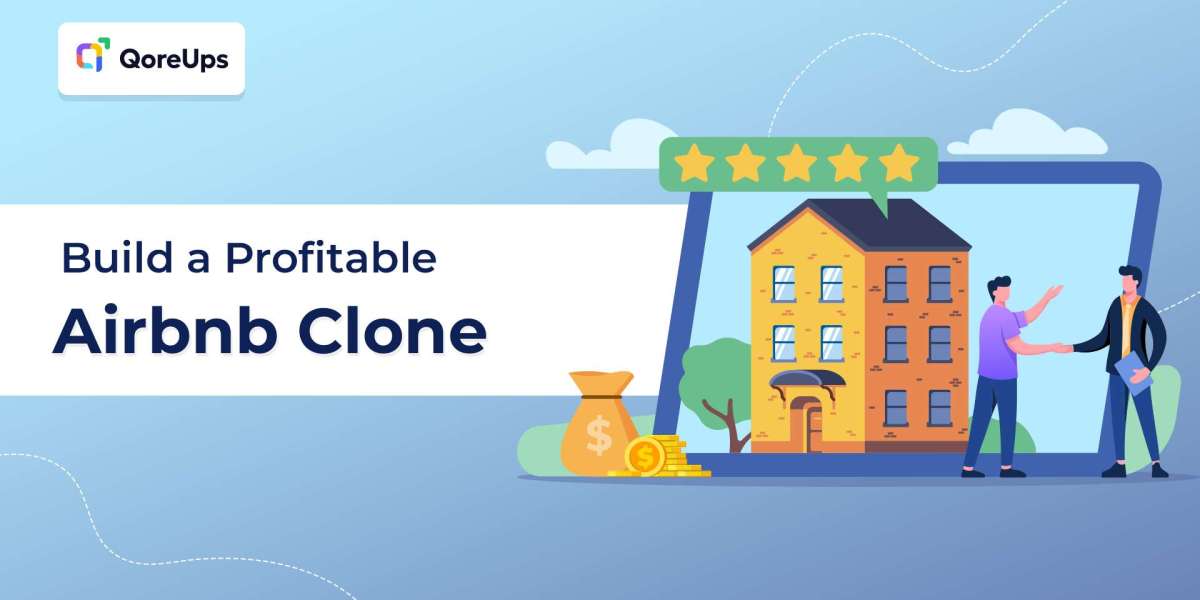The vacation rental market is booming and is expected to reach $107 billion by 2028.
That means building your own Airbnb clone in 2025 can be a great business opportunity.

More people are traveling again, many are working remotely, and travelers want unique, local experiences.
So, the need for platforms like Airbnb is growing fast.
A well-made bnb clone can help you build a successful and profitable business.
But how do you actually build a good Airbnb clone app today?
Let’s discuss step-by-step.
Step 1: Know How Airbnb Works
Before you start building, it’s important to understand how Airbnb works.

Airbnb connects two groups (hosts and guests):
- Hosts who list their homes, set prices, and decide availability.
- Guests who search for homes, book stays, and leave reviews.
Your Airbnb clone should let users to:
- Sign up as hosts or guests
- Search and filter listings
- Check the stay’s availability
- Book and pay safely online
- Leave reviews and solve disputes
Ultimately, it should let you manage everything with an admin dashboard.
To make money, you can:
- Take a small fee from every booking
- Charge hosts a subscription fee
- Offer paid promotions or featured listings
- Sell extra services like insurance
Step 2: Pick the Right Technology

To build a reliable bnb clone, choose good technology:
- Frontend (what users see): Use React.js or Next.js
- Backend (server-side): Use Node.js with Express or Django (Python)
- Database: PostgreSQL, MongoDB, MySQL
- Cloud hosting: AWS, Google Cloud, or Vercel
- Payment options: Stripe, PayPal, Razorpay
- Notifications: Email (SendGrid), SMS (Twilio)
Depending on your business goals and resources, you can build a custom BnB clone using suitable tech stacks to gain full flexibility and control. Alternatively, there is another option available in the market: no-code tools like QMarket, which enable a faster and more accessible launch.
Step 3: Focus on Simple and Friendly Design

One reason Airbnb is popular is its easy and clean design.
Make sure your Airbnb clone app includes these features:
- Simple and clean to use
- Easy to navigate for both hosts and guests
- The booking process takes only 3 to 5 easy steps
- Listing could include nice photos and maps
- Mobile-friendly since many users book on phones
Remember, you’re not just copying Airbnb — you want to give users the same trust and unique experience.
Step 4: Add Something Unique
Don’t just copy Airbnb exactly. To stand out, add something special:
- Focus on a specific niche like pet-friendly stays or eco-lodges
- Support local languages and currencies
- Offer instant booking options
- Present exciting loyalty rewards to retain customers
These unique touches help build your brand and attract loyal users.

Step 5: Launch and Promote Your Airbnb Clone
When your bnb clone is ready, here’s how to get users:
- Start small with a beta launch in one area to learn and improve.
- Gather testimonials and early reviews to build trust.
- Use SEO and content marketing to get found on Google.
- Work with local travel influencers to spread the word.
- Create referral programs — reward users who bring friends to your platform.
- Always listen to user feedback and improve quickly.
Final Thoughts
Building an Airbnb clone in 2025 isn’t just copying a website. It’s about creating a safe, easy-to-use, and trustworthy platform that offers something valuable.
Whether you make a small bnb clone for a local area, build a special clone Airbnb for a niche, or launch a global Airbnb clone app, your success depends on how well you do it.
Start small, learn fast, and always focus on your users.
The travel market is ready for new ideas. Will your Airbnb app clone be the next big hit?



